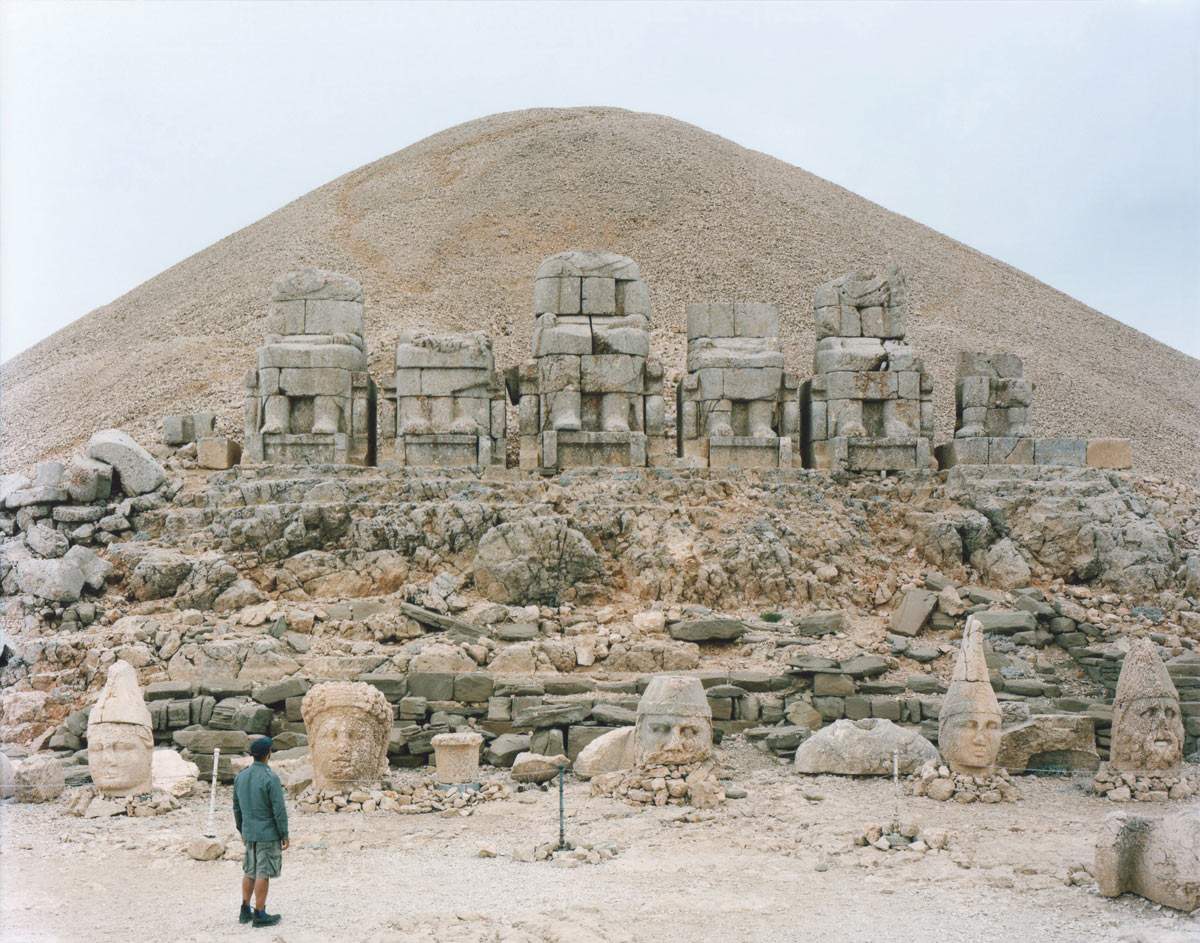The forms of time: Fabio Barile and Domingo Milella on display at the Baths of Diocletian
The National Roman Museum, in the spaces of the Baths of Diocletian in Rome, is hosting from June 22 to July 31, 2022 the exhibition Le forme del tempo, a photographic project by Fabio Barile (Barletta, 1980) and Domingo Milella (Bari, 1981), curated by Alessandro Dandini de Sylva. “Knowing the past is as amazing an undertaking as knowing the stars,” wrote George Kubler in his book The Shape of Time (1972) from which the title of the exhibition is taken, which is intended to be a journey through geological, archaeological and present time. After the first two exhibition chapters at the Pescheria Visual Arts Center and in the ancient Pesaro Synagogue, The Shapes of Time now seeks a new connection with the great halls of the Roman baths.
The exhibition represents an evolution of the dialogue between the two artists, this time dedicated to the relationship between the archaeology of landscape and the archaeology of language: the two artists and the curator have imagined the exhibition itinerary as a conversation between images and archaeological space, for an archaic return to reflection and for a profound research on photography and the very act of looking.
“The works of Fabio Barile and Domingo Milella are photographs that reflect Time,” writes Alessandro Dandini de Sylva. “Barile’s images show forms in perpetual evolution, from the deep time of the world and geology, while Milella’s are rooted in the stone of the archaic, of the primitive in the present in a single glance. The discourse on the ancient is evoked by the dialogue between the images in the exhibition: from the Pyramids of Giza to the Tomb of King Midas in Phrygia from the Campo Imperatore plateau to the Gorropu Gorge in Supramonte. Through the dialogue between the two artists, the exhibition aims to bring together silent geologies and talking stones by searching for a common archaeology.”
Along with the photographic works, The Forms of Time presents a selection of archaeological artifacts, chosen with the director of the National Roman Museum, Stéphane Verger, with the intention of creating unexpected visual and semantic juxtapositions between the photographs, the Great Halls and the fragments of time unearthed from the museum’s storerooms.
"With the exhibition The Forms of Time, the Archaeology and Photography project of the National Roman Museum continues,“ Verger explains. ”The project was created to promote archaeological heritage through the universal language of photography. The choice to exhibit works preserved in the Museum’s deposits alongside the images of photographers Fabio Barile and Domingo Milella allows us to highlight the extent of the relationship that exists between the Museum and its contents and contemporary creativity. Moreover, the photographic exhibition finds in the venue of the Baths of Diocletian the ideal space for a visual narrative dedicated to the passage of time, and is in constant dialogue with the imposing structures of the Baths’ halls and exhibits."
As in previous exhibition chapters, the works of the two artists are presented in an installation designed to foster a dialogue with the archaeological space, absorb all its valuable vibrations and offer visitors an original cultural experience. The exhibition will also be a room for reflection where, during the exhibition period, there will be a meeting with writers and scholars of archaeology and a workshop for children in collaboration with the Cartastraccia association. The Forms of Time is accompanied by a publication published by Fondazione Malaspina that includes a text by National Roman Museum director Stéphane Verger and a conversation between curator Alessandro Dandini de Sylva and photographers Fabio Barile and Domingo Milella. Forms of Time at the Baths of Diocletian is a production of Isthmus in collaboration with Camilla Grimaldi and Greta Voeller.
Image: Domingo Milella #0638 Nemrut Dagi Turkey (2013)
 |
| The forms of time: Fabio Barile and Domingo Milella on display at the Baths of Diocletian |
Warning: the translation into English of the original Italian article was created using automatic tools. We undertake to review all articles, but we do not guarantee the total absence of inaccuracies in the translation due to the program. You can find the original by clicking on the ITA button. If you find any mistake,please contact us.



























